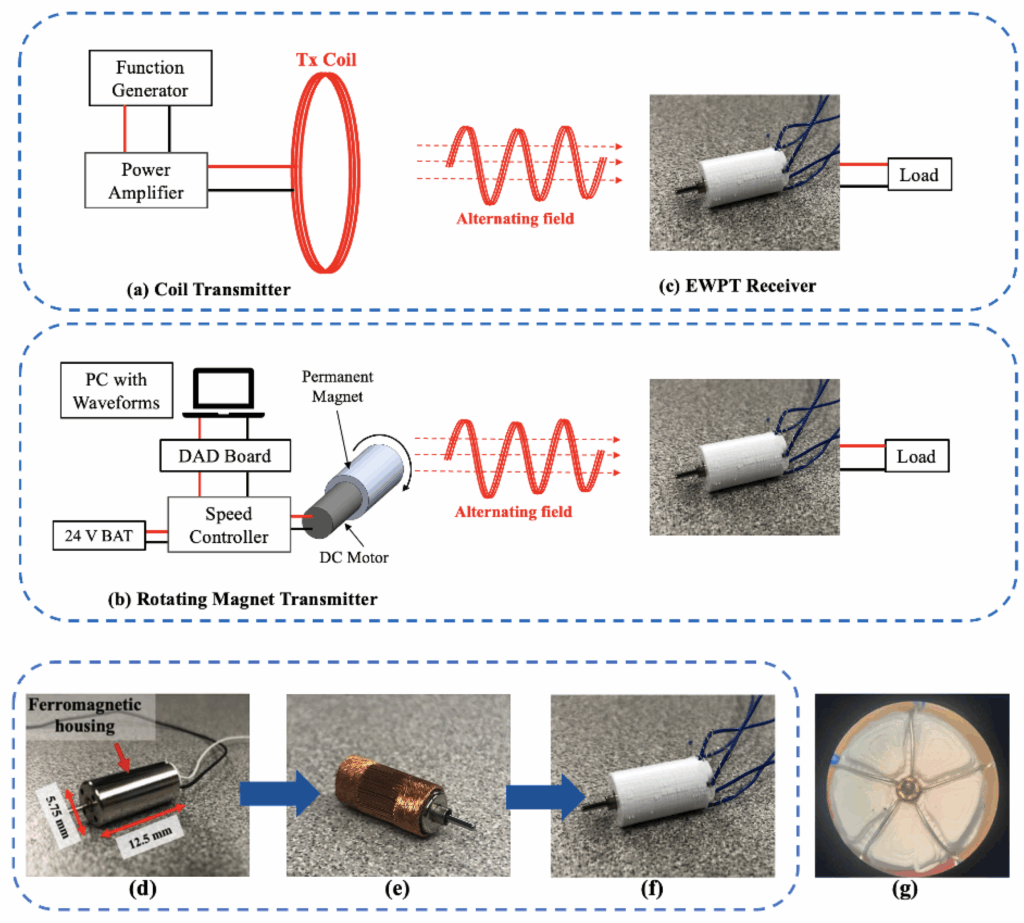Abstract
Current-carrying coils and rotating permanent magnets can be used to create time-varying excitation magnetic fields for electrodynamic wireless power transmission (EWPT). Both types of transmitters produce low-frequency, time-varying fields at the locations of the receiver, but with fundamental differences. A coil transmitter produces a uniaxial magnetic field, where the direction of the field is along a single axis, but the amplitude varies in a bipolar fashion. In contrast, a rotating magnet transmitter produces a rotating magnetic field, with the amplitude varying in two orthogonal directions. Building on prior work for coil transmitters, this manuscript presents the modeling and a simulation framework for rotating magnet transmitters. The performance of an EWPT system is then studied both theoretically and experimentally for both transmitter types. For the same B-field amplitude (501 µT) and a fixed transmitter-receiver distance of 12 cm, a receiver driven by a coil transmitter produces 38 mW, whereas the same receiver driven by a rotating magnet transmitter produces 149 mW, nearly four times higher. This power increase is a result of 50% higher receiver rotation speeds using the rotating magnet transmitter. The power transfer efficiency is also six times higher for the rotating magnet transmitter.
https://www.mdpi.com/1996-1073/18/10/2506

Fig. 1: Overview of an electrodynamic wireless power transfer system. Both (a) a current-carrying coil transmitter and (b) a rotating magnet transmitter driven by a motor can be used to generate a time-varying field to drive the (c) EWPT receiver to transfer power. The construction of the EWPT receiver is shown in (d–g).

